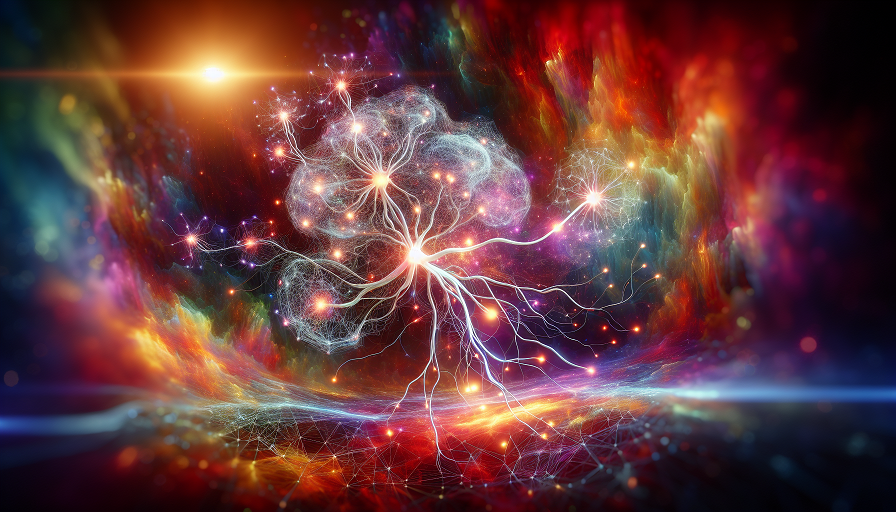
When was the last time you truly did… nothing?
No scrolling, no background noise, no multitasking. Just sitting, daydreaming, or watching clouds drift by without the guilt of “wasting time.”
If that feels foreign—maybe even uncomfortable—you’re not alone. In a culture that glorifies hustle and optimization, stillness has become almost taboo. But neuroscience is starting to echo what philosophers have long suspected: your brain needs idleness as much as it needs action.
In fact, the act of doing nothing may be one of the most productive things you can do for your brain’s long-term performance.
Contents
- The Productivity Trap
- What “Doing Nothing” Actually Means
- The Neuroscience of Mental Stillness
- Why Constant Stimulation Is Draining
- Why Doing Nothing Enhances Creativity
- The Cultural War on Stillness
- Practical Ways to Relearn the Art of Stillness
- Can Nootropics Enhance Mental Restorative States?
- Stillness Isn’t Wasted Time—It’s Reboot Time
The Productivity Trap
From time-blocking to biohacking, most of us live by calendars and checklists. And while structure has its place, the message underneath is often clear: your worth is tied to what you produce.
Even leisure gets repackaged. Reading must be “educational.” Podcasts must be “informative.” Walks need to be “podcast-powered.” Stillness for stillness’s sake? That’s not a KPI.
But here’s the twist: the brain doesn’t perform best under constant stimulation. Like a muscle, it needs time off—not just to rest, but to integrate, repair, and spark new connections.
What “Doing Nothing” Actually Means
Doing nothing doesn’t mean zoning out in front of a screen or scrolling endlessly. That’s passive consumption. True idleness is non-goal-directed mental space. It might look like:
- Sitting on a bench with no phone
- Staring out the window without judging yourself
- Lying on the floor and letting your thoughts wander
- Taking a walk with no destination or soundtrack
It’s the absence of input and output—a kind of cognitive exhale that modern life rarely allows.
The Neuroscience of Mental Stillness
When you’re not focused on any task, your brain doesn’t power down. Instead, it switches to what neuroscientists call the default mode network (DMN).
This network activates during rest, daydreaming, and introspection—and it’s where some of your brain’s most important backstage work happens.
Functions of the Default Mode Network:
- Autobiographical memory and self-reflection
- Future planning and imaginative simulation
- Emotional processing and social reasoning
- Creative problem-solving and insight
In other words, your brain gets smarter when you give it space.
Why Constant Stimulation Is Draining
When you’re always engaged—answering emails, checking updates, switching tasks—your brain stays in task-positive mode. This burns through:
- Glucose and oxygen (the brain’s fuel)
- Working memory capacity
- Dopamine reserves
Without downtime, these systems get depleted. You may feel foggy, irritable, or disconnected—not because you’re lazy, but because your brain is overloaded.
Chronic over-engagement leads to:
- Decision fatigue
- Reduced focus and impulse control
- Increased anxiety and sleep disruption
Ironically, trying to be “always on” leads to mental brownout.
Why Doing Nothing Enhances Creativity
Have you noticed that your best ideas often come in the shower, while driving, or during a walk? That’s no accident.
When you’re idle, your brain has time to connect unrelated ideas, simulate outcomes, and experiment mentally. Einstein called this “combinatory play.” Psychologists call it incubation. Whatever you call it—it doesn’t happen on demand.
Creative insight requires space. And in a world that never stops talking, that space is often drowned out by noise.
The Cultural War on Stillness
Western productivity culture has long viewed rest with suspicion. Idleness is often labeled as:
- Laziness
- Unambitious behavior
- Wasted potential
But ancient philosophies told a different story:
- Ancient Greeks: Practiced “scholē,” or contemplative leisure
- Taoist thought: Embraced “wu wei,” or effortless action through alignment
- Christian mystics: Valued stillness as divine receptivity
Throughout history, doing nothing was seen as necessary for wisdom, not a barrier to it.
Practical Ways to Relearn the Art of Stillness
1. Schedule Idleness
Block off time in your day with no agenda. Literally write “do nothing” on your calendar. Treat it like any other meeting—with your mind.
2. Resist the Urge to Fill
When you’re bored, don’t reach for your phone. Notice the discomfort. Sit with it. Often, it’s in that pause that clarity begins to surface.
3. Create Input-Free Zones
- Eat meals without screens or distractions
- Take device-free walks
- Designate 30 minutes each week as tech-free reflection time
4. Practice “Soft Focus” Activities
These include things like:
- Stargazing
- People-watching
- Sketching or freewriting with no outcome in mind
They’re not quite active, not quite passive—perfect for encouraging open-ended thought.
Can Nootropics Enhance Mental Restorative States?
Interestingly, some people use nootropic supplements not to stimulate work, but to support the brain’s restorative phases.
Helpful compounds include:
- L-theanine: Promotes calm focus and helps facilitate entry into relaxed, default-mode states
- Citicoline: Supports clarity and cognitive recovery following mental exertion
- Ashwagandha: An adaptogen known to lower cortisol and reduce overstimulation
When used wisely, these supplements can support the mental terrain where true rest and insight thrive.
Stillness Isn’t Wasted Time—It’s Reboot Time
When you pause, you give your brain a chance to:
- Integrate what you’ve learned
- Make sense of scattered thoughts
- Recover from hidden cognitive fatigue
These aren’t luxuries. They’re essentials.
Doing nothing is not an escape from productivity—it’s a foundation for it. It’s in the space between tasks, between thoughts, between noise, that the brain catches its breath. It’s where clarity grows. Where insight is born.
In a world constantly pushing for more, stillness is a radical act of mental care. And the smartest brains? They’re not the ones that go the hardest—they’re the ones that know when to stop.

